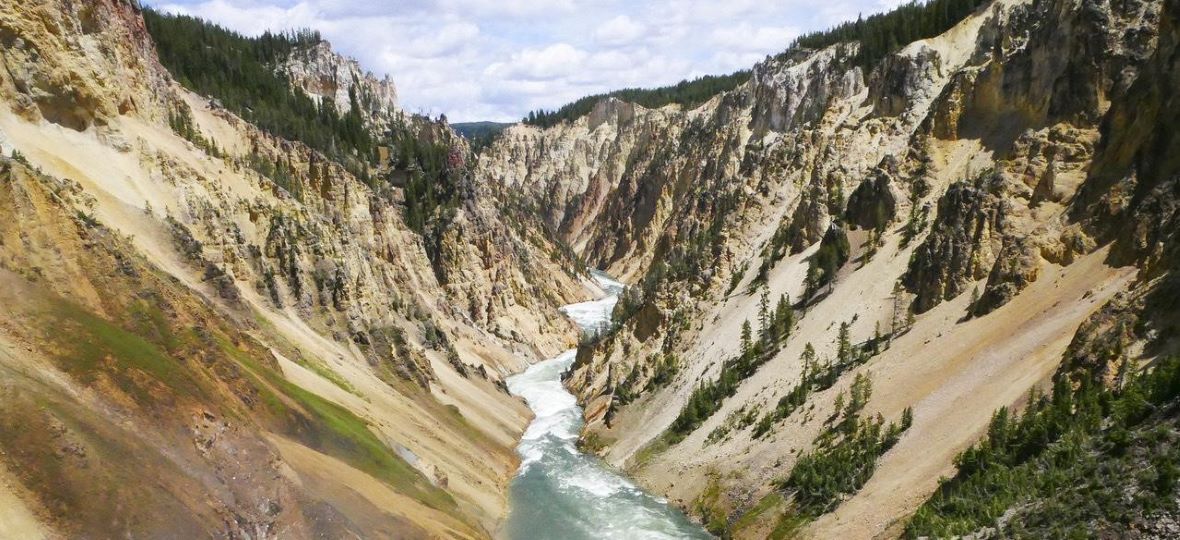Yellowstone National Park’s 150th birthday on March 1 will kick off an array of activities that are planned throughout the year to honour the milestone occasion. More importantly, however, park officials say the sesquicentennial event is a time to reflect on the lessons of the past, but also a time to focus on the future.
“This isn’t just about the last century-and-a-half,” says Yellowstone Superintendent Cam Sholly. “We also want to use this anniversary to do a better job of fully recognizing the many American Indian nations that lived in this area for thousands of years prior to Yellowstone becoming a park.”
Indeed, over 10,000 years before the United States government preserved Yellowstone National Park, Native Americans had fished, hunted, gathered plants, gathered obsidian, and used thermal waters for religious and medicinal purposes there.
The modern incarnation of the park began when President Ulysses S. Grant signed the Yellowstone National Park Protection Act on March 1, 1872, setting aside one of the world’s largest nearly intact natural ecosystems for the “benefit and enjoyment of present and future generations.”
One hundred and fifty years later, Yellowstone will host a series of activities to commemorate that date with many Native American Tribes expected to participate.
And in August, multiple Tribal Nations will participate in installing a Teepee Village near the Roosevelt Arch, creating an opportunity for tribe members to directly interface with visitors and educate them about their culture and heritage out on the landscape, Sholly said.
At Old Faithful, park staff are converting a structure near the visitor education centre into a Tribal Heritage Center, and Tribal Nations can use that space to display their artwork and cultural items for visitors to see.
“We’re focused on really making sure we’re telling these stories right, as the stewards of these parks,” Sholly said. “We’re working with Tribal Nations to ask questions around ‘What are we getting right? What are we getting wrong? What are we missing completely?’”
Additionally, this year, several infrastructure projects totalling over $125 million are being planned with funding coming from the bipartisan Great American Outdoors Act, which passed in 2020. Amongst them: a $28-million improvement project that will see the road from Tower Fall to Chittenden Road near Dunraven Pass reopen after being closed for two years.
Rick Hoeninghausen, director of sales and marketing for Yellowstone National Park Lodges, says the park is a place of tremendous inspiration that has “contributed to science, art, music, literature and so much more.”
While the pandemic has delayed or impacted much of the planning around the park’s anniversary, Xanterra Parks will be hosting a public event on May 6 to commemorate the 150th summer season. Activities will include a Native American art exhibition and marketplace at the Old Faithful Inn, and free tours around the Old Faithful area.
Scott Frazier, a 72-year-old Crow Tribal member and the director of Project Indigenous, said he grew up visiting the park often, and in his opinion, Yellowstone is a sacred place.
“In this time of struggle between the human beings, these places are very important,” he said. “To be able to come out and listen to nature — and not a machine, and not cars, and not your boss – to come out and sit and just listen to nature – it’s very healing.”
Record visitations

The anniversary comes at a time when the park has never been more popular, having registered a record number of visitors last year, despite fewer hotel rooms and campsites being available because of the coronavirus pandemic and construction projects.
About 4.86 million visits were tallied in 2021, breaking the prior record set in 2016. It’s a million more people than visited in 2020.
Visits to national parks across the US have been trending up in recent years, such as Utah’s Zion National Park, which also set new visitor records in 2021 as tourism bounced back from the shutdowns imposed during the early days of the pandemic.
Known worldwide for its wolves, bears and other wildlife and thermal features like the Old Faithful geyser, Yellowstone straddles the borders of northwestern Wyoming, southern Montana, and eastern Idaho, comprising a nearly 9,000-sq.-km-area that is about 150 times the size of New York’s Manhattan Island.

